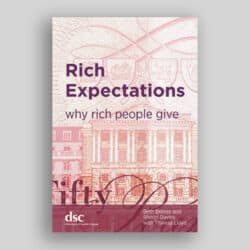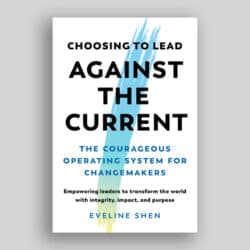A Year Of Living Generously—Dispatches From The Front Lines Of Philanthropy
by Lawrence Scanlan.
Toronto: Douglas & McIntyre; 2010. isbn: 978-1-55365-416-2
Peter Broder
Although its title, A Year of Living Generously, echoes that of the popular Mel Gibson/Sigourney Weaver film from a few decades ago (The Year of Living Dangerously), that is about as close as Lawrence Scanlan’s book gets to celebrity—or celebrity philanthropy. Indeed, you won’t find much discussion in his book of megafoundations, social enterprise, or many of the other “hot” issues that typify contemporary coverage of charities and their work. But Scanlan’s subject matter deserves as much attention as any of those more familiar topics.
Scanlan is a veteran journalist and author based in eastern Ontario, and has a longstanding interest in community and social issues. His book focuses on the day-to-day operations of 12 charities for which he volunteered over the course of a year. This is unglamourous but vital work and is doubtless more characteristic of the charitable sector than what often appears in the headlines.
Most of the charities Scanlan profiles are based in or around Kingston, Ontario, and though this precludes exploration of the different cultures and approaches to charity that can be found in various other regions of Canada, it does serve to illustrate nicely the overlap of volunteers and other ties among groups that so often mark the charitable sector, especially in smaller communities. That is one of the many frontline truths this book captures.
Although, during the year covered in the book, Scanlan typically worked with Kingstonbased organizations, the book includes descriptions of months he spent working with international development organizations in Africa and Central America, as well as discussion of a stint doing post-Katrina housing reconstruction in Louisiana. Among the other organizations Scanlan volunteered for are a soup kitchen, a homelessness organization, a hospice, an immigrant services agency, a prison outreach group, a camp with a therapeutic riding program, a developmental disability home, and an aboriginal school.
Since many of the agencies Scanlan worked with provide social services, a good portion of various chapters are spent describing the hardships faced by the individuals he encountered. But he also frames the work done by these groups within its contemporary or historical context and provides a broad overview of the philanthropic landscape in Canada and the U.S. Each chapter features a brief coda in which Scanlan describes a group or situation from his reading or experience as a gloss on his work with a particular organization or on his topic generally.
Scanlan also occasionally delves into philosophical and sociological thinking on the underpinnings of volunteering and, more generally, philanthropy. Perhaps because of the types of organizations with which he worked, the book’s discussion of policy questions is limited. Scanlan spent a month with Lake Ontario Waterkeeper (LOW), which pro-actively addresses environmental issues. In his chapter on that experience, he examines some of the challenges of charities trying to influence government policy through regulatory processes or the courts. The book’s epilogue features an extended discussion of statistics and trends in Canadian and global philanthropy.
Elsewhere, while there are certainly many observations about the political appeal of downloading or inadequacy of resources, these are not developed into a full analysis. And though Scanlan describes his work with Habitat for Humanity, helping to rebuild housing in New Orleans after Hurricane Katrina, he doesn’t tackle the issue of the relative role (and resources) of charities and government in addressing disasters.
Scanlan does note the frustration of a Northern Ontario dentist at the failure to invest in fluoridation in native communities and the resulting increase in demand for dental care, which highlights the all-too-common issue of charity being mobilized to deal with consequences of problems rather than mandated to attack underlying causes. Given this, I would have welcomed seeing him delve into the issue of charities affecting policy change in the same thoroughness that he brings to other aspects of the book.
More specifically, although the Income Tax Act rule prohibiting charities from carrying on political activities is alluded to, there is no nuanced discussion of the difference between partisan and non-partisan political activities. There is also no mention that it is permissible for charities to undertake some public engagement activities to advance their charitable purposes. In administering the political activities provisions the Canada Revenue Agency allows some flexibility with respect to the amount of resources a charity may devote to non-partisan political activities, if it is a small organization and may allow organizations to average over a number of years the percentage of resources used on such work. That type of discussion might have made clear that charities often have more scope to influence policy than is frequently assumed.
As well, although social justice is clearly an element in what motivates Scanlan’s volunteering and the types of organizations he chose to work with, he never grapples with the important association between religiosity and contributions to charity. While the long tradition of faith-based social justice work in Canada certainly continues, it is not the context many young people bring to their dealings with charities in the early 21st century. In this regard, it is striking how many of Scanlan’s fellow volunteers described in the book are middle-aged or elderly. More broadly, the apparent continuing decline in Canadians’ religiosity and the well-documented correlation between regular attendance at religious services and giving and volunteering pose huge challenges both for individual organizations and for the sector as a whole.
These quibbles aside, Scanlan’s book is a solid and useful contribution to the literature in this area. It explores some of the more under-reported aspects of charity work in Canada and provides some thoughtful insights into the operational realities facing many organizations. It is also a telling portrait of life as a volunteer. In short, it’s an engaging book about engagement.
Peter Broder is Policy Analyst & General Counsel for the Muttart Foundation in Edmonton, Alberta, and serves on the Editorial Board of The Philanthropist.


